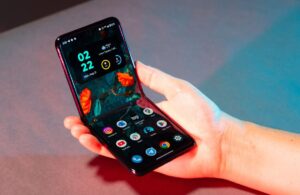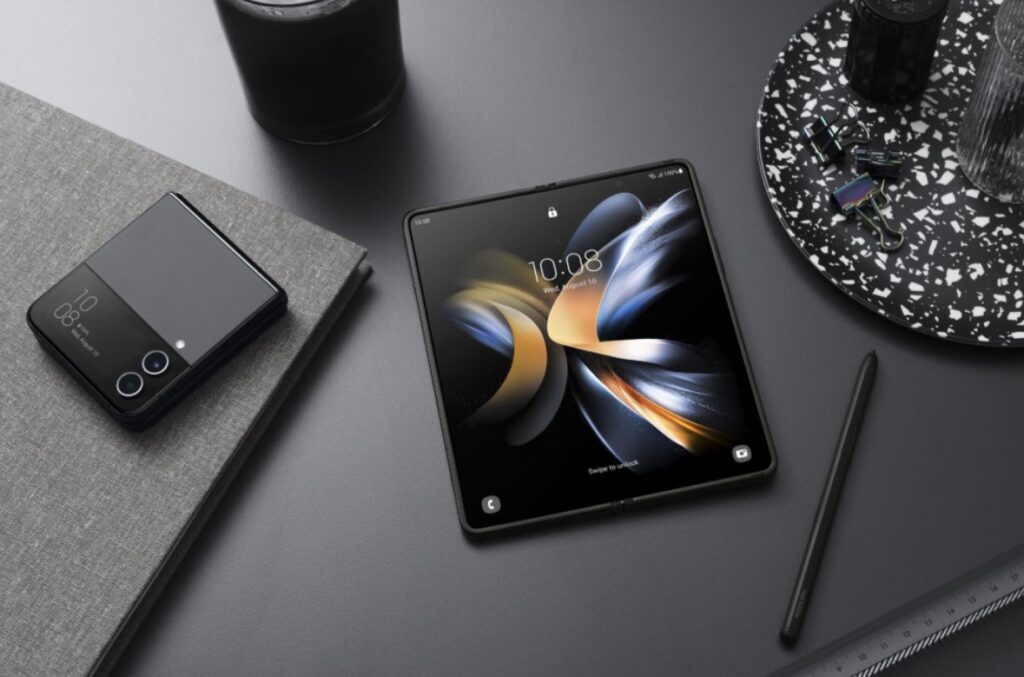The dawn of foldable smartphone technology has ushered in a new chapter in the evolution of mobile devices. No longer confined by the rigid limitations of traditional phone designs, consumers now have the freedom to experience innovation that fuses versatility with futuristic functionality. The allure of foldable displays, coupled with their ability to redefine portability and usability, has brought a fundamental shift to the way we perceive and interact with our smartphones. As we move forward in 2025, the impact of foldable smartphone technology is undeniable, cementing its place as one of the most groundbreaking advancements in the industry.
The Rise of Foldable Smartphone Technology
Foldable smartphone technology has been in the works for years, but its full potential is only now being realized. Brands have invested heavily in research and development to overcome the engineering challenges of creating devices with flexible displays and durable hinges. These efforts began to bear fruit in the early 2020s, and by 2025, foldable smartphones are no longer a novelty—they’re entering mainstream adoption.
One key driver of this rise has been the improved reliability and lifespan of foldable screens. Early iterations suffered from fragility and high costs, but advancements in materials like ultra-thin glass and robust polymers have allowed manufacturers to create devices that are both durable and affordable. This technological leap has made foldable smartphones more appealing to a broader audience.
Benefits of Foldable Smartphone Technology
Enhanced Portability
Foldable smartphones offer the benefit of combining a compact form factor with the functionality of larger screens. Users can enjoy the convenience of carrying a smaller device in their pocket while having the option to unfold it for a tablet-like experience when watching videos, gaming, or multitasking. This versatility eliminates the need for multiple devices and meets the demands of a mobile-first generation.
Multitasking Made Simple
Another major advantage of foldable smartphone technology is the seamless multitasking capabilities it provides. Users can have multiple apps open side by side, taking productivity to the next level. Whether it’s responding to emails while browsing the web or taking notes during a video call, foldable phones offer a highly adaptable workspace.
Immersive Entertainment Experiences
Foldable devices also revolutionize entertainment. The expanded screens create an immersive experience for streaming services, mobile games, and reading content. The transition between compact and full-screen modes ensures that users can switch between productivity and leisure effortlessly, making foldable smartphones the ultimate entertainment hub.

Challenges in the Evolution of Foldable Smartphones
Despite their groundbreaking advantages, foldable smartphones have faced notable challenges on their path to mainstream success. Durability remains a concern, as these devices rely heavily on the hinge mechanism and flexible screen technologies, which must withstand repeated folding over time. While innovations like improved hinge designs and scratch-resistant coatings have made significant strides, manufacturers continue to refine these aspects to ensure reliability.
Furthermore, foldable technology comes with increased production costs, which often translate to higher retail prices. Although prices have gradually decreased as manufacturing techniques improve, foldable smartphones still remain less accessible to budget-conscious consumers than standard models. Addressing these challenges is imperative for manufacturers to push widespread adoption even further.
Impact of Foldable Smartphone Technology on the Industry
The rise of foldable smartphone technology has had profound implications on the mobile industry. Companies are now rethinking phone design, focusing on creating devices that prioritize adaptability and user experience. This shift has also sparked competition, with leading manufacturers vying to create the most innovative and practical options in the foldable market.
Additionally, the demand for foldable smartphones has invigorated advancements in related sectors. For instance, battery technology is evolving to support the larger screens and increased power demands of these devices, while app developers are pressing forward with software optimizations tailored to foldable displays. The ripple effects of foldable technology extend far beyond the devices themselves.
The Future of Foldable Smartphone Technology in 2025 and Beyond
Looking ahead, foldable smartphone technology is poised to take even greater strides. We can anticipate the introduction of rollable displays, which build on the flexibility of foldable screens but provide even more design possibilities. Devices may incorporate hybrid designs, combining foldable, rollable, and stretchable elements to push the boundaries of what mobile devices can achieve.
Another area ripe for evolution is artificial intelligence integration. AI can enhance the user experience on foldable smartphones by providing smarter app scaling, adaptive split-screen features, and predictive multitasking tools. These advancements will likely become key selling points shortly.
Enhanced Durability for Everyday Use
One critical focus area for foldable smartphone technology is improving durability. With flexible screens and complex hinge mechanisms, manufacturers are continually working to create devices that are more resistant to wear and tear. Future designs may incorporate advanced materials like ultra-thin glass and self-healing polymers to ensure longevity and reliability.
Augmented Reality and Virtual Reality Integration
Foldable smartphones have the potential to become essential tools for AR and VR experiences. Their expanded display capabilities provide an immersive platform for interactive applications, gaming, and professional use cases. By 2025, we may see these devices feature dedicated AR/VR support, enabling seamless integration with wearable devices and standalone hardware.
Advances in Battery Technology
To power the innovative designs of foldable devices, battery technology will need to keep pace. Manufacturers are exploring solid-state batteries and other next-generation energy storage solutions to provide longer battery life and fast-charging capabilities. These advancements will address consumer concerns about device endurance while maintaining portability.
Broader Ecosystem Compatibility
Foldable smartphones of the future may no longer operate in isolation but as part of an interconnected ecosystem of devices. Whether syncing seamlessly with wearable tech, smart home devices, or cloud platforms, their role as the centerpiece of a user’s digital lifestyle will likely expand.
Enhanced Gaming Experiences
Gaming on foldable smartphones could see a major boost as displays grow larger and processing power continues to increase. Wide aspect ratios, adaptive refresh rates, and foldable-friendly controllers will make mobile gaming more competitive with traditional consoles and PCs, attracting casual and hardcore gamers alike.
Sustainability Initiatives
Another key trend for foldable smartphones is the focus on sustainability. Manufacturers are increasingly committing to using recycled materials, reducing e-waste through modular designs, and improving energy efficiency. By adopting greener practices, these devices will align with consumer demand for more eco-conscious technology.
Affordable Foldable Devices
Finally, as foldable smartphone technology matures, production costs will decrease, making these devices more accessible to a broader audience. Entry-level foldable models at competitive price points may become a reality, allowing more users to explore the benefits of this innovative technology without breaking the bank.
Enhanced Durability
With technological advancements, foldable smartphones are becoming more durable than ever. Manufacturers are introducing stronger hinge mechanisms, scratch-resistant glass, and improved foldable displays designed to withstand daily wear and tear. These enhancements ensure that users can rely on their devices for long-term use, boosting confidence in the product’s longevity.
Versatility and Productivity
Foldable smartphones are redefining versatility in mobile devices. Their larger screens and split-screen functionality cater to multitasking professionals, offering a tablet-like experience without sacrificing portability. Whether it’s editing documents, attending virtual meetings, or managing workflows, these devices are transforming how users approach productivity on the go.
Improved App Ecosystems
To complement the foldable format, app developers are optimizing their applications for dual-screen and flexible displays. From gaming apps to productivity tools, these improvements enhance user experiences, making foldable smartphones more functional and efficient. This collaboration between hardware manufacturers and software developers creates a seamless ecosystem for users.
5G Integration
Foldable smartphones are not just about design innovation—they’re also leading the charge in adopting 5G technology. With faster data speeds, better connectivity, and low latency, 5G integration takes foldable devices to the next level, unlocking new possibilities in streaming, gaming, and remote collaboration for users across the globe.

Personalized User Experiences
The foldable format offers opportunities for more personalized and adaptive user experiences. Features like custom multitasking layouts, unique gestures for folding, and personalized display settings provide a higher level of customization. This focus on tailoring the device to each user’s preferences makes foldable smartphones stand out in the competitive mobile market.
Final Thoughts
Foldable smartphone technology has redefined the blueprint for mobile devices in 2025. It has challenged conventions, pushed the boundaries of design and utility, and inspired a new wave of innovation across the tech industry. As technology continues to evolve, foldable smartphones stand out as a symbol of progress, heralding an era where adaptability and creativity reign supreme. With their unique combination of power and practicality, these devices have undoubtedly transformed the way we interact with the digital world, inviting us to rethink what smartphones can truly achieve.


